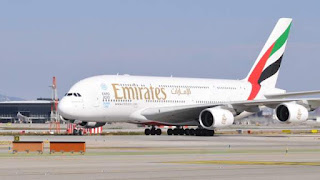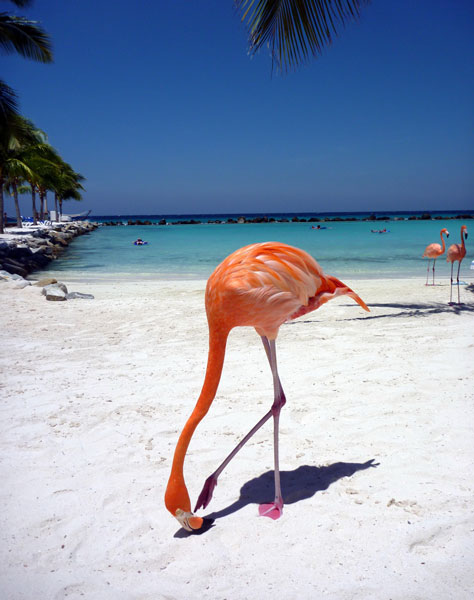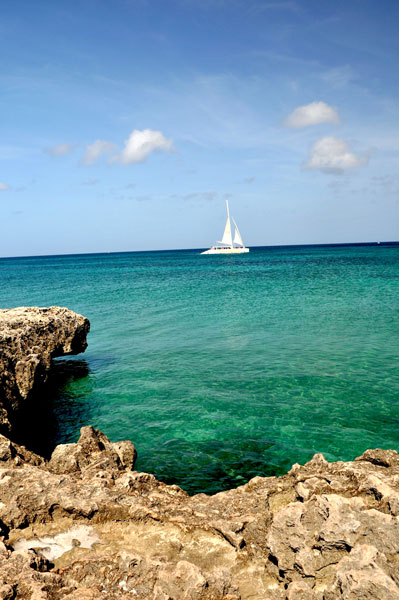The Galapagos Archipelago is located in the Pacific Ocean, 1,050 miles west of Ecuador. It consists of 13 large volcanic islands, 6 smaller islands and 107 rocks and islets, which are distributed around the line of the terrestrial Ecuador.
The Galapagos Islands are famous for its numerous endemic species and the studies by Charles Darwin that led him to establish his theory of evolution by natural selection.
In the Galapagos Islands we find the perfect combination of great naturalists underwater encounters with very interesting shore excursions.
Important species inhabiting the islands:
Galapagos Giant Tortoise or is the animal that gave its name to the islands, Land Iguana, Marine Iguana iguana the only species that seeks its food in the sea, endémicaGaviota lava, Galapagos Penguin is the only species registered the northern hemisphere, one decormorán flightless species, kestrel or sparrow hawk Galapagos, also endemic dwarf Galapagos heron, and 13 endemic species of finches.
Each island of the Galapagos is unique for its biodiversity and recommend include:
North Seymour, where you will see blue-footed boobies, colonies of frigates, swallow-tailed gulls, sea lions, marine iguanas. Also land iguanas, cactus Opuntia and vegetation that changes color depending on the time of year.
Spanish Island, Bay Gardner Bay, white sandy beach with a small population of sea lions. Punta Suarez, albatrosses between the months of April and October, sea lions, marine iguanas, Darwin finches, Galapagos doves and stunning blower hole.
Floreana, Post Office Bay and the famous barrel that served as correspondence for deposit in the eighteenth century whaling ships. Cormorant, sandy green olivine crystal sand. After a walk to the other side of the island is a beach of fine white sand beach where sea turtles nest (December to May)
Santa Fe, colonies of sea lions, land iguanas, gulls and petrels. We can also view their forests of giant cactus and palo santo. Charles Darwin Research Station. Here you can see the state of parenting and the famous Galapagos Lonesome George.
Bartolome Island you can see lava formations and tuff cones. This island is one of the most visited and photographed Pinnacle Rock your foot in which you can see sea lions and penguins. Puerto Egas with its black lava landscape and natural pools where you can swim with sea lions. This place is excellent for snorkeling.
Rabida Island, the red sand beach where you can see colonies of wolves
Three hairs on the back of the beach, a colony of flamingos. You can also observe brown pelicans, boobies and nine species of Darwin's finches.
Chinese Hat, a small island inhabited by birds such as hawks, pelicans, lava gull. You can also snorkel occasionally to see manta rays and sea lions.
Santa Cruz, to the north is the Turtle Cove and is necessary to visit a panga ride through a mangrove swamp and can watch sea turtles nesting at certain times of the year.
tourist information
As a tourist attraction, Galapagos hardly be surpassed. With its prehistoric-looking animals, wildness of the landscape, the gore of its history, the exotic flora and fauna, have reason certain authors as William Beebe in call them 'Galapagos end of the world. "
Nothing more attractive than this suggestive letterhead to create the "need" for people to visit; but tourism is a special Galapagos tourism, leisure and entertainment not, nor great hotels, crowded beaches, casinos and caberets, but on the contrary, to visit the islands, admiring nature at its original splendor, to experience for a moment that simple life, but yet so peaceful and more humane than the daily haunts the poor residents of large urban agglomerations we call cities.
Tourism is "passer" and stay in the different islands as short as not to spoil the sites visited. Lodging is yacht-hotel, or in small huts.
Some years ago there was no tourism in the modern sense, which had is some curiosity about a remote and known by few place, for which a ticket is getting the only more or less passable, the Cristóbal Carrier commercial vessel, that made their monthly, or some Navy cruiser occasionally offered this type of transport routes.
From 1969, with a more commercial sense, "tours" are established organized to offer visitors the following: transfer by plane to Baltra Island, a journey of eight or fifteen days in a well-conditioned boat, with good nutrition and care on board, and the return trip. He'd also available smaller yachts and even some tourists who wanted permancer could stay on the islands or in some particular cases, such as Santa Cruz Island in a first class hotel: the Hotel Galapagos.
At present this type of tourism has gained popularity. Needless to yachts and planes that make the service as just approach any of the travel agencies in major cities for information and prices.
Once in Galapagos for the tourist takes most of your visit, the National Park Service has selected the most attractive places and arranged with paths of travel, which are marked with small stakes painted white. Certain areas prone to destruction as edges of craters, places of sparse vegetation, etc. are forbidden visitors, as it has a sign with a clear legend: "Do not go."
Generally, many boats carrying tourists on board, the guide is responsible for enforcing the Articles of Regulation to which visitors must abide, or risk being punished and that are:
1 No animal should be disturbed and no plant or touched or moved rock.
2 No material may be transported to the islands or an island to another.
3 The animals should not be touched or petted.
4 Do not give any food to the animals.
5. scare or chase every living being, from its nest or resting place is prohibited.
6 is prohibited to lap favorite animals or Islands.
7 Wastes of all kinds should be removed from the islands.
8 Do not buy souvenirs such as sea lion tusks, shells of turtles or tortoises.
9 Had urge to buy any of these, please contact the National Park.
10 When camping, do not make fires.
11 Do not write names on rocks or phrases of any kind.
12 Do not be embarrassed to show your conservationist attitude.
Information Request 13 National Park Service on any trip in the Galapagos.
While it is reasonable to believe that these assumptions are not fulfilled to the letter, however, to go through the sights seen visitors collaborate when they are warned in time and given facilities to achieve these purposes, as is the marking clear paths that can be used and provision of plastic sleeves to pick fruit peel, papers and even cigarette butts.
Thus, despite being close to the 10,000 tourists who pass annually through the islands, not destruction and overcrowding garbage can cause a crowd of that magnitude is detected.
This leads us to ponder that while Galapagos is a tourist location, its development has to be limited, because otherwise not reach the existing facilities and the too many visitors would escape the control of the authorities, with the consequent destruction is precisely what the appeal of Galapagos: its natural beauty. Lately it has been known to set a maximum quota of 12,000 tourists a year.
Naturally, visitors interested in the more exotic and less trite, but the route is fixed and is generally as follows:
Flight tickets from Guayaquil to Baltra: two hours fifteen minutes. By boat, three days and a half from Guayaquil to San Cristobal. Taking this as a starting point, and making the journey in direction of clockwise, we have:
San Cristobal
Formerly known as Chatham, is the capital of the province. It has two main population centers:
Puerto Baquerizo Moreno, Ecuador in honor of the first President who visited the Islands, Puerto Chico was the turn of the century, and El Progreso, where the domestic population and Ingenio Hacienda Manuel J. Cobos Progress was. Both places can be visited and is an excellent opportunity to observe the change in vegetation as a few meters towards the center of the island rise. Other interesting places to visit are:
The Wolf Pack, the Bay of Earwigs, Cerro Brujo and Kicker Rock, a large rock formation at the entrance to the harbor, and especially the freshwater lagoon at the top of the island Junco Lake, a crater volcano which is reached by a path whose route is approximately one hour.
Spanish
Continuing southbound is the Spanish or Hood Island, small in size (60 km2), uninhabited, but full of varied wildlife, from own island iguanas, lava lizards, snakes and tortoises mount type, including countless birds. Notable is the albatross colony, of which about 10,000 couples, many of them making a nest in the same tourist trails without fear of being disturbed is calculated. Object of curiosity is a kind of geyser, as it is not volcanic, but a tunnel which penetrates a wave of certain features and out a spout at the end, bringing the water to a height of 20 meters to get away with the breeze in a thin drizzle.
Floreana
About 60 kilometers east of the Spanish is Floreana, Santa Maria and Charles, a dimension of 170 km2. It is the island best known for its bloody dramas and their mysterious disappearances. Your access port is Playa Prieta or Black Beach, where the town is located. Close by the place called La Lobería, easily accessible to the visitor is. In the interior of the island, at the top, are the farms of Ritter and the South, the Asilo de la Paz, a place in which they settled Wittmer. Near this place, prefab house stood: Paradise Baroness Wagner Bousquet. In the center of the island: the Cerro de las Straws, 680 meters high.
A half hour navigation north towards Playa Prieta, is Post Office Bay or Post Office Bay, where the mailbox Colnett established in 1793 is located.
Near this place you can see the Corona del Diablo or Islet Onslow, volcanic cone that rises from the sea and whose spirit impressive appearance overwhelms the visitor. Just beyond Punta Cormorant, where there is a beach where you can pick up small olivine crystals. On this coast is occasionally penguins and lagoons near the beach, flamingos. Across a wide bay Point of white sand in which usually distinguishes turtle nesting, is the Shark Bay.
In the Eastern part of the Island Bay Caves, where tradition says the pirates were staying stands.
Isabela
Northwest of the Floreana or Isabela is the Albemarle, the largest in the archipelago (4,588 km2). It is the island of the great plains and wild cattle. Instead access is Puerto Villamil. The entrance to the Bay is a bit difficult due to the large amount of rocks on the coast of low cliffs and deep crevices that make navigation difficult, to which must be added an ever rolling sea.
20 kilometers from Puerto Santo Tomás population is (in honor of Berlanga), close to which the Wall of Tears can be seen in the camp of the German Penal Colony that existed until 1959.
Inside the island there are six major volcanic craters: Ecuador, WoLI, Darwin, Alcedo, Sierra Negra and Cerro Azul. The Sierra Negra crater is 10 miles in diameter, the second largest in the world.
Fernandina
Occasionally you can go for the western part of Isabela and continue along the Bolivar Strait separates the island of Fernandina or Narbo rough. The latter is just a volcano of intense activity, therefore, sterile desert. At the top of a huge bay Strait is observed on the side of Isabela. Is the Bay Banks (Banks Bay) formed by the collapse of the west wall of an old crater.
Finch
Most of the time there are around Isabela, Puerto Villamil but taken to the north, passing near the Pinzón Island or Duncan, small in size, uninhabited and unimportant. It is located between Isabela and Santa Cruz.
San Salvador
San Salvador, Santiago or James, is located northwest of Santa Cruz. Its area is 584 km2, is uninhabited and unfit for cultivation.
It is accessed by the James Bay (James Bay), whose beach is surrounded by large cliffs susceptible foam lava hit the waves; a few kilometers from the bay two volcanic craters are in the form of an inverted cone, whose vertices large deposits of high purity salt crystals are.
In 1963, when the salt still constituted State monopoly, were carried out works for removal of salt and sold on the continent, but the decree Demonopolization and freedom for industrialization ended efforts to establish an industry more Galapagos. In 1975 there was only the skeleton of a wooden shed and a water tank located in the ravine.
Near James Bay you can visit a colony of fur seals. Near James Bay "The Pirates Cove" (Buccaneer Cove) is observed.
San Bartolomé
To the east of Santiago Island is a tiny: the San Bartolomé. The site access to the island is the Sullivan Bay, whose coast is landed and the rise of a volcanic prominence begins, the same as for the many craters and solfatares has a lunar appearance. From the summit, which is about 100 meters high, is visible in the bottom two bays in a horseshoe, one beside the other, leaving an isthmus between them. The right effort at the end of two strange basalt rock formations: A cone-shaped and other shaped pen, which is spectacular for its slenderness.
Seymour and Baltra
Continuing east you come to a set of three islands: Seymour, Baltra a little further south, separated by the Canal Itabaca Santa Cruz Island.
The first two are dry and not much to say except that WWII was rum which the Ecuadorian government gave as an ally, so you were converted to American military bases. Just used the airport today is one of those built for aviation and naval defense of the Panama Canal.
Of the buildings that existed until 1948, many were destroyed, dismantled and moved to other points finally abandoned many others.
Plazas
As the main port of Santa Cruz, Puerto Ayora, is in the southern part of the island, the tour is done by its Eastern part to pass along the Plazas. These islands, as they are smaller, are characterized by their shores in large colonies of sea lions and other exotic wildlife specimens in a truly breathtaking scenery.
santa Cruz
This island was known as Indefatigable. Even though it has only brackish water, however, is the most populous and the most picturesque of the group. A wide bay of turquoise, Bay Academy (Academy Bay) allows entry to Puerto Ayora. The bay is flanked by a cliff in the western part, where several houses on the rocks is observed. One of them is the Casa de las Iguanas, where hundreds of black iguanas invade the house at lunchtime, the call of its owner, Karl Angermeyer.
The next house belongs to his brother you can visit the cave, a place which have met several curious objects from all over the Archipelago.
Across the cliffs of a huge bay of white sands and waters rich in lobsters opens. It's called Turtle Bay or most commonly used name in English: Tortuga Bay.
To the right of Academy Bay population of Puerto Ayora is located. Along the village Charles Darwin Biological Station is located.
Between the cliff and Puerto Ayora there is a small channel leading among stones and a mangrove lagoon that opens splendid and quiet: the Pond of the Nymphs. Neighbours say they used to bathe in it the wife and daughter of a settler, to which they mistook the nymphs.
At the top of the island is the agricultural area. On its way vegetation change relative to the height and moisture is observed. At the top are small towns: Bellavista, West, Santa Rosa and continuing with the road going northwards to Baltra, the town of Santa Cruz.
To the north lies the Bay of Conway. This bay is closed at its end to form a narrow channel of turquoise water, by which one enters to the sembarcar on the island. Once ashore, visitors can see a lot of land iguanas and a long stretch of black rocks which give a stunning backdrop to the landscape.
santa Fe
Finally, returning to San Cristobal to close the tour, it appears to the West Island Santa Fe or Barrington. This is small and lacks fresh water; in it but a lot of live goats to which they can be seen walking in long rows along the edge of the cliff. They survive because the settlers have adapted to drinking salt water.




























